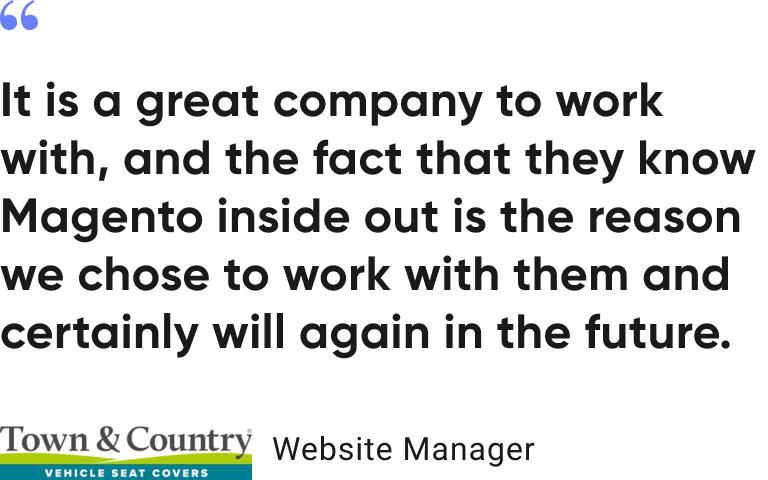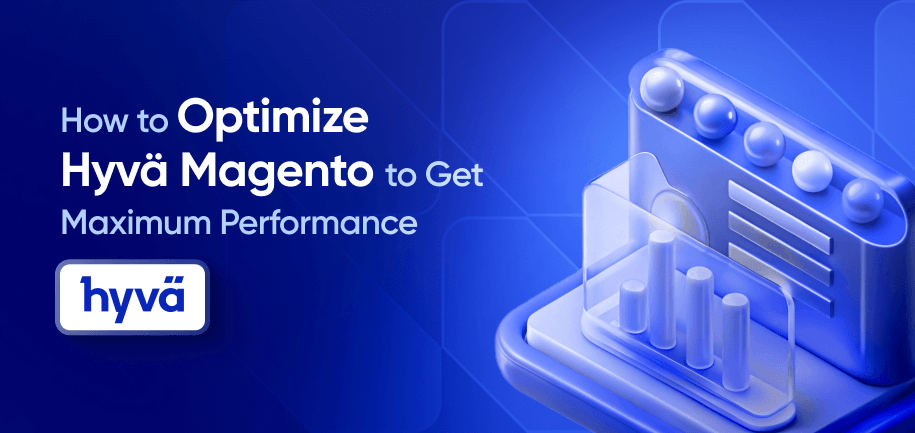Hyvä has become the go-to solution for Magento merchants aiming to speed up their storefronts. With its lightweight architecture and modern tech stack, Hyvä indeed delivers a clear performance boost right out of the box. But while many see a switch to Hyvä as the sole solution to all speed and user experience issues, that’s not how things work.
Performance in Magento is multi-layered, and migrating to Hyvä is just the first step. To improve loading speed, conversion rates, and overall site health, you need a complex approach to Hyvä-powered Magento optimization.
This article describes Amasty’s best practices for Magento optimization after migrating a store to Hyvä. We’ll share why and how your backend environment, database, caching, media, and even third-party modules have to be made compatible with the new front-end tech.
What You Gain from Hyvä Migration
Migrating to Hyvä is a major upgrade in how your Magento store operates. It replaces the legacy Luma or custom theme with a cleaner, more efficient system that reduces the overhead typically associated with Magento’s front end.
Here’s what you gain when you move to Hyvä:
Faster Page Loads. Hyvä drastically reduces the amount of JavaScript and CSS needed to render each page. Less time waiting, more time engaging customers.
Better Core Web Vitals. By improving Largest Contentful Paint (LCP) and First Input Delay (FID), Hyvä helps your store meet Google’s performance benchmarks.
Developer-Friendly Stack. Hyvä uses Tailwind CSS and Alpine.js, offering a cleaner, more modern codebase that’s easier to maintain and extend.
Customizable UX Without the Bloat. Hyvä’s modular approach makes it possible to deliver responsive designs without the technical debt of older front-end solutions.
Future-Ready Foundation. With the community actively expanding Hyvä UI components and supporting modules, your store remains adaptable and on-trend.
But again, these perks are only fully realized when Hyvä is paired with a well-optimized backend and infrastructure setup.
12 Steps to Maximizing Your Hyvä Store’s Potential
To truly maximize speed, scalability, and user experience, you need to look beyond the theme. At Amasty, we help merchants fine-tune every part of their store after migration. Below are our team's 12 optimizations that guarantee getting the most out of your Hyvä setup:
1. Optimize Hosting Environment and Server Stack
Your Magento store’s performance starts with infrastructure. Even the most optimized front end will lag if paired with underpowered or misconfigured hosting.
Choose scalable cloud hosting. Platforms like AWS, DigitalOcean, or Google Cloud offer better performance and uptime than shared hosting. Look for setups supporting NGINX, Redis, and Varnish (more on the former two below).
Run PHP 8.2 or later. Modern PHP versions bring major speed and memory improvements, particularly with JIT (Just-in-Time) compilation.
Enable OPCache and adjust PHP-FPM settings. Properly tuned execution environments reduce load under peak traffic.
These optimization steps can cut page load times by 2-3x and significantly reduce bounce rates. However, server fine-tuning is delicate, and one misstep can break critical functions. It's best to leave it to a dedicated team or experienced DevOps specialists.
2. Implement an Intelligent Caching System
A fast front end needs a fast cache. Magento’s default cache is useful, but your tech team can and should step it up by:
Using Redis to handle page cache, session storage, and general caching to ensure consistent and fast data retrieval.
Setting up Varnish to cache full pages and offload rendering from Magento entirely. This results in near-instant page loads for cached views.
Configuring TTL (Time-To-Live) values based on content volatility. Static pages can be cached longer than dynamic sections (like carts or product detail pages).
When configured properly, caching can boost speed by 40-60% while significantly reducing backend load.
3. Maintain Database Health and Performance
When not regularly maintained, any database becomes bloated and unoptimized, slowing down even the fastest front end. Amasty’s maintenance team can help audit your database, identify slow queries, and implement indexing best practices. But if you have an in-house development department, here’s what you should task it with:
Clean up regularly. Remove expired quotes, sessions, and logs from tables like report_event, quote, and customer_visitor.
Continuously audit and optimize slow queries. Use tools or built-in logging to identify underperforming queries and resolve indexing issues.
Add missing indexes to frequently queried fields to speed up data access.
Set up automated database maintenance routines to ensure ongoing stability.
4. Configure Magento for Production Efficiency
Ensure your Magento runs in production mode to boost speed by 20-30% and disable Magento’s JS/CSS minification to prevent conflicts with Hyvä. To avoid on-the-fly generation of assets, use the bin/magento setup:static-content:deploy command to pre-generate static content.
5. Deliver Optimized Images and Media
Heavy media files are a leading cause of slow page loads. Configure your website to convert images to WebP or AVIF formats automatically, which can speed up page loading by 30-50%, especially on mobile devices. Enable lazy loading for media and implement responsive image delivery using srcset. For maximum efficiency, set up a Magento CDN to serve all media content. These optimizations can significantly reduce bandwidth usage and improve loading times.
6. Review Extensions and Custom Code
Even with Hyvä’s streamlined theme, your store’s speed can suffer if outdated or heavy modules are added. Hyvä can accelerate your site by 2-3 times, but only if you avoid cluttering it with legacy technology. Ask your developers to:
Remove unnecessary extensions that add overhead without real benefit
Replace legacy modules with lightweight, Hyvä-compatible versions optimized for the theme and avoid installing incompatible modules in the future.
Refactor custom code in checkout, catalog, and cart processes to eliminate frontend bottlenecks.
Move heavy tasks to background jobs or queues (especially relevant to API syncs or report generation).
This keeps your frontend lean, fast, and fully leveraging Hyvä’s performance gains.
7. Implement Prefetching for Critical Paths
Hyvä supports adding prefetch links to product cards and filters, enabling near-instant page transitions, especially on mobile devices. To leverage this, prefetch 5-10 popular products from the homepage or category pages to speed up navigation. You can also prefetch the Hyvä checkout page when a product is added to the cart, ensuring faster checkout load times.
8. Align JavaScript Strategy with Hyvä’s Lightweight Approach
Hyvä eliminates Magento’s legacy JS stack, replacing it with Alpine.js and vanilla JS for better performance. But lingering scripts can still degrade load times. Request a Magento code audit that aims at:
Using Alpine.js for interactivity in a minimal, declarative way. Keep JS modules focused and avoid unnecessary complexity.
Removing references to Knockout.js, RequireJS, or jQuery unless strictly necessary.
Deleting third-party scripts that block rendering or load synchronously. Use async and defer attributes where possible.
In short, always stick to Hyvä’s lightweight JS philosophy.
9. Leverage Hyvä UI Components and Hyvä Checkout
Maximize the Hyvä ecosystem’s advantages by leveraging its reusable, performance-optimized UI components wherever possible.
To speed up checkout and improve conversions, consider the switch to Hyvä Checkout – a modern, lightweight, and user-friendly process designed to increase revenue. Note that not all modules and payment methods are compatible with it yet, so be sure to verify compatibility in advance. For replacements, see Amasty’s rich catalog of Hyvä Checkout-friendly extensions.
10. Separate Administrative and Frontend Resources
Though Hyvä optimizes the frontend, Magento’s backend can slow down during peak admin activity like exports and imports. To mitigate this, use a dedicated server for cron jobs and administrative tasks to isolate backend load. It's also best to schedule heavy backend operations during off-peak hours (e.g., import product overnight) to maintain frontend responsiveness.
11. Align UX and SEO with Web Vitals
A fast site means nothing if layout shifts and interactivity issues frustrate users. That’s why UX and SEO optimizations go hand-in-hand with performance tuning.
Improve Core Web Vitals. Focus on metrics like Largest Contentful Paint (LCP), First Input Delay (FID), and Cumulative Layout Shift (CLS) to boost UX and search visibility.
Use font-display: swap in your font CSS to ensure text remains visible during font loading, preventing invisible text flashes.
Extract and inline critical CSS to speed up initial rendering and reduce layout shifts.
This layer ensures that your performance translates into a better shopping experience and stronger organic search presence.
12. Monitor Performance Continuously
After optimization, a skilled tech team has to monitor performance over time and continuously fine-tune your store’s behavior. Here’s what you should expect them to do:
Install performance tools like New Relic or Blackfire to monitor server response times, database queries, and frontend rendering.
Use browser-based tools (e.g., Lighthouse, PageSpeed Insights) to regularly track Core Web Vitals and UX metrics.
Set up alerts for anomalies such as increased response times or failed cache lookups.
With ongoing performance audits, the team will spot regressions early and keep your store running at peak efficiency.
Make Your Migration to Hyvä Count
Migrating to Hyvä is a smart move, but it’s only the beginning. To truly boost your Magento store’s speed, reliability, and user experience, you need to optimize what happens behind the scenes.
When you migrate to Hyvä with Amasty, you get both an expert switch to the new front end and access to a team that helps you optimize every layer of your store, from backend architecture to user experience. Here’s what we bring to the table:
Full Hyvä Migration Support – We handle the complete transition from Luma or custom themes to Hyvä, ensuring code quality and visual consistency.
Performance-Focused Store Audit – Post-migration, we perform a full technical audit to identify bottlenecks in caching, database load, media handling, and server configuration – and we help you fix them.
Hyvä-Compatible Extension Suite – Our catalog gives you the functionality you need without compromising front-end speed. Over 160 of Amasty’s Magento modules are fully Hyvä-ready, with more added regularly.
Image Optimization Tools – We reduce image weight and automate WebP generation with our tools or offer recommendations for third-party integrations that fit your stack.
Ongoing Technical Support & Advisory – Our team is here to support performance testing, module updates, and custom development tailored to your store’s goals.
Partner with Amasty to get Hyvä migration services that go far beyond simply installing the theme. We help you achieve faster load times, higher conversions, and better customer experiences. Our goal is to make sure that both your store and the Hyvä setup perform at their best.

















